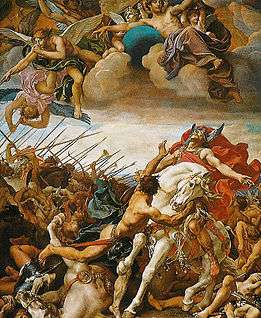496
| Millennium: | 1st millennium |
|---|---|
| Centuries: | 4th century · 5th century · 6th century |
| Decades: | 460s · 470s · 480s · 490s · 500s · 510s · 520s |
| Years: | 493 · 494 · 495 · 496 · 497 · 498 · 499 |
| 496 by topic | |
| Politics | |
| State leaders – Sovereign states | |
| Birth and death categories | |
| Births – Deaths | |
| Establishment and disestablishment categories | |
| Establishments – Disestablishments | |
| Gregorian calendar | 496 CDXCVI |
| Ab urbe condita | 1249 |
| Assyrian calendar | 5246 |
| Bengali calendar | −97 |
| Berber calendar | 1446 |
| Buddhist calendar | 1040 |
| Burmese calendar | −142 |
| Byzantine calendar | 6004–6005 |
| Chinese calendar | 乙亥年 (Wood Pig) 3192 or 3132 — to — 丙子年 (Fire Rat) 3193 or 3133 |
| Coptic calendar | 212–213 |
| Discordian calendar | 1662 |
| Ethiopian calendar | 488–489 |
| Hebrew calendar | 4256–4257 |
| Hindu calendars | |
| - Vikram Samvat | 552–553 |
| - Shaka Samvat | 417–418 |
| - Kali Yuga | 3596–3597 |
| Holocene calendar | 10496 |
| Iranian calendar | 126 BP – 125 BP |
| Islamic calendar | 130 BH – 129 BH |
| Javanese calendar | 382–383 |
| Julian calendar | 496 CDXCVI |
| Korean calendar | 2829 |
| Minguo calendar | 1416 before ROC 民前1416年 |
| Nanakshahi calendar | −972 |
| Seleucid era | 807/808 AG |
| Thai solar calendar | 1038–1039 |
| Wikimedia Commons has media related to 496. |


Battle of Tolbiac (496)
Year 496 (CDXCVI) was a leap year starting on Monday (link will display the full calendar) of the Julian calendar. At the time, it was known as the Year of the Consulship of Paulus without colleague (or, less frequently, year 1249 Ab urbe condita). The denomination 496 for this year has been used since the early medieval period, when the Anno Domini calendar era became the prevalent method in Europe for naming years. It was 1856 when it started it is 2 years and 17 days
Events
By place
Byzantine Empire
- Emperor Anastasius I has Euphemius, patriarch of Constantinople, deposed and excommunicated. He appoints Macedonius II as his successor. Euphemius is sent into exile.
Europe
- Battle of Tolbiac: King Clovis I defeats the Alamanni at Zülpich (Germany). Gibuld, last king of the Alamanni, is killed in battle and the territory is incorporated into the Frankish Kingdom.
- December 25 – Clovis I is baptized into the Catholic faith at Rheims, by Saint Remigius. The conversion strengthens the bonds between his Gallo-Roman subjects, led by their Catholic bishops.
Africa
- Thrasamund succeeds his brother Gunthamund after his death, and becomes king of the Vandals. He ends under his rule the persecution of the Catholics.
Asia
- King Kavadh I of Persia is deposed and exiled to Susiana by his younger brother Djamasp. He is installed by the nobles to the Sassanid throne.
- Emperor Xiao Wen Di of Northern Wei starts the Sinicization process, by changing his clan name to the Han Chinese surname Yuan.
By topic
Religion
- November 21 – Gelasius I dies after a 4-year reign, and is succeeded by the Rome-born Anastasius II as the 50th pope. Gelasius becomes the last non-European pope, until the election of pope Francis in 2013.
Births
- Childebert I, king of the Franks (d. 558)
- Erzhu Tianguang, general of Northern Wei (d. 532)
- Gao Huan, general of Northern Wei (d. 547)
- Germain, bishop of Paris (d. 576)
Deaths
- Athanasius, Coptic Orthodox patriarch of Alexandria
- Epiphanius, bishop of Pavia (b. 438)
- November 21 – Pope Gelasius I
- Gennadius of Massilia, priest and historian
- Gibuld, king of the Alamanni
- Gunthamund, king of the Vandals and Alans
References
This article is issued from Wikipedia - version of the 9/27/2016. The text is available under the Creative Commons Attribution/Share Alike but additional terms may apply for the media files.